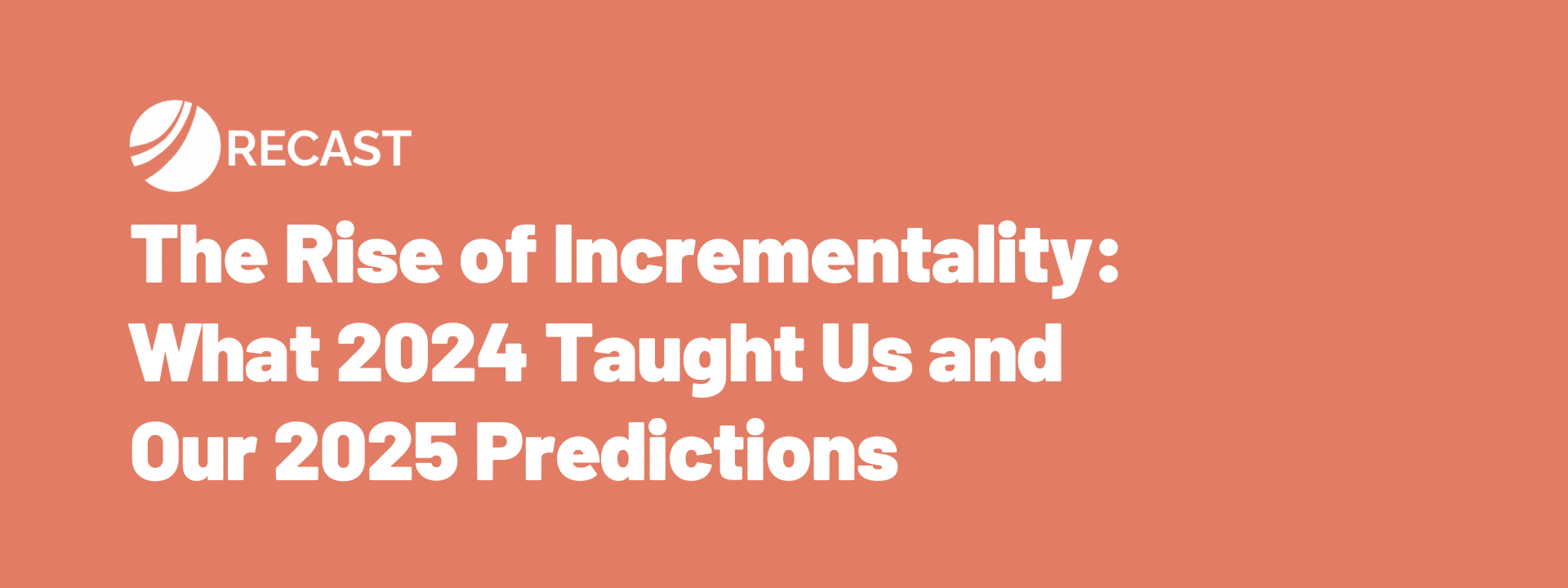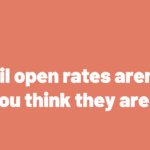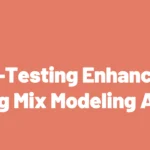Two learnings from 2024: it was a great year for incrementality, but MMM took a much bumpier path.
First, incrementality became a hot topic last year. Everyone’s talking about running experiments – and that’s amazing.
We’re seeing marketing teams build out awesome experimentation roadmaps and learning agendas and sharing those results with their executive teams, which is a really, really encouraging trend for the marketing industry as a whole.
But another development was that the shine started to wear off of the MMM approach to marketing measurement.
In 2024, we talked with a lot of companies who are newer to MMM and got totally burned on their first projects. Either they tried to use an open source tool to build a solution in-house or they got burned working with a vendor that wasn’t able to actually create any value for them.
We think this is good! MMM is hard to get right, and unfortunately, a lot of brands bought a lot of snake oil last year, but we think that now that companies have seen that MMM isn’t a panacea that will solve all of their problems, they can get down to the hard work of building an incrementality system that actually works for them.
Looking forward: Measurement Predictions for 2025
We asked Michael Kaminsky, Recast co-CEO, what his predictions for 2025 are, and he told us this:
1 – Democratization of incrementality experimentation
“My big wish for marketing measurement: easy incrementality experimentation becomes available to all brands at an affordable price. Here’s why it can happen:
Incrementality experimentation methods are not that complicated – and you don’t want them to be. The beauty of a structured experiment is that interpreting the results requires many fewer assumptions than a complex observational model like an MMM.
So you want the methods to interpret the experimental results to be as straightforward as possible – anything “proprietary” is just another way it can go wrong!
I think these tools are going to become much more available in 2025 – whether it’s through open-sourced packages (there are a lot of good ones), or through vendors that package them into easy-to-use, affordable software.
When I was running the data science and analytics team at Harry’s, we built a bunch of these tools in-house on top of open-source software. I’d love to see more brands have these same opportunities, regardless of their technical proficiency.
That’s where the future of marketing experimentation is going: more brands running more experiments. It should be as easy for them as possible.
2 – The rise of “incrementality systems”.
It’s a very different way of thinking about marketing and finance than what people have been doing for the last 30 or 40 years.
At its core, an incrementality system is about identifying the causal mechanisms in your business.
Computer scientists might call this an explore-exploit problem: “We know what we’re doing today isn’t fully optimal, so we need to run experiments, learn what works, and use those insights to improve.”
At Recast, we break this process down into four core steps: planning, experimentation, validation, and optimization.
For a CMO planning next quarter, this would look like:
• Building an initial budget mix for the quarter using insights from their MMM and other attribution tools.
• Identifying channels with lots of uncertainty in their measurement, and prioritizing them in an experimentation roadmap.
• Throughout the quarter, running these experiments! Results can be used to validate the output of attribution tools and calibrate future MMM refreshes.
• With a more calibrated MMM, optimize marketing budgets, identify more testing opportunities, and repeat.
We’ve built Recast to support this kind of approach to marketing optimization and expect to see more teams using the platform in exactly this way in 2025.



